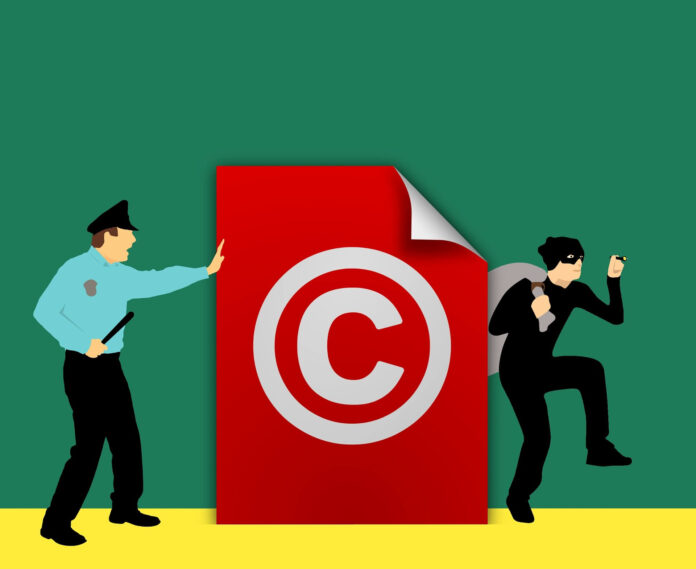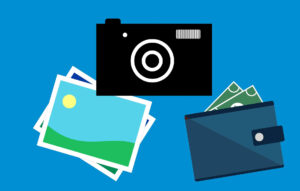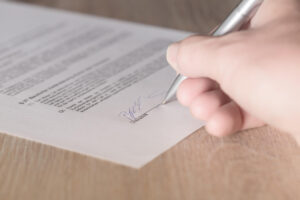
Your club newspaper still needs a featured article? Your website needs a photo? A search on the internet will certainly provide you with suitable material in no time at all. But watch out: A letter from a lawyer can arrive at your doorstep just as quickly as you can download and publish this content. And a warning letter due to the infringement of copyrights can cost you a lot of money!
Our Best Practice Tips for Copyright Issues
Unfortunately, ignorance does not protect honorary amateur numismatists that acted in good faith and did not want to harm anybody. But don’t worry: In this article, we will explain how to avoid the worst mistakes as a beginner and how to act correctly when it comes to matters of copyright. Two preliminary remarks:
- This article is supposed to provide you with best practice tips and does not substitute for legal advice from a lawyer. We do not assume the responsibility for the legal validity of our recommendations. In case of doubt, please consult a lawyer. And be aware of the fact that legislation and jurisdiction may differ from country to country.
- The legal concept of copyrights defined by common law differs fundamentally from what civil law legislations understand by the term copyrights – or authors’ rights as they often call it. In this article, we do not differentiate between the two legal systems because the distinction does not have an impact on the tips we want to present. If you want to know more about the differences between copyrights and authors’ rights and their importance, click here.

1. Everything That Is Not Allowed Is Forbidden
When it comes to copyright matters, you should always assume that you do not have the right to use anything unless it is explicitly stated otherwise. To use something means: re-publishing or sharing it with other people – it does not matter whether you do so in a printed club newspaper, on your private website or on Facebook.
The courts stated unmistakably: Intellectual property is protected even if there are no explicit indications regarding copyright. Each text and every image (or film) are first and foremost the intellectual property of the author or producer, downloading and using them without asking this person is definitely an infringement of copyright. This rule does not only apply in Europe but also in the USA and in other countries.
2. It Does Not Cost Anything to Ask
This leads to the second and very important tip: Ask the author! It does not cost anything. If you are afraid that the copyright holder might say no, you should completely refrain from using the material anyway. If the author or the photographer authorises you to use the article or the photo, you are on the safe side (see tip No. 5). Remember to specify exactly for what purpose and in which form you want to use the material. And stick to what you said! If a photographer allows you to use his or her photo on your website, you do not automatically have the right to use it later in a printed book without asking again. And you also have to pay attention to the author’s instructions as to how he or she wants to be mentioned.

3. The Biggest Worry: Photos
Generally speaking, all the things mentioned do apply to photos and to texts. However, using public domain images is especially complicated and a legal minefield. The general rule is: Works fall into the public domain 70 years after the death of the author and may therefore be used by anyone with no restrictions (unless the copyright went over to the heirs). For example, you are allowed to use pictures of historical paintings or engravings. Theoretically. Where do you get these pictures from? Usually from books (as scans), from museums (photos you took by yourself) or from the internet.
In 1999, a US court held in a precedent ruling that non-artistic (“slavish” is the word used by the judges) copying of public domain works of art cannot be protected – in the USA. Thus, the image of an engraving by Dürer would not be protected. However, even in the USA some photo agencies and museums claim that these pictures are copyrighted as their property. And those who do not have the money to afford the risk of a trial are likely to refrain from using such pictures. Things are different when it comes to three-dimensional works – statues for instance – because in this case a certain threshold of originality is already met due to the image detail, the position from which the photo was taken, and other decisions made by the photographer.
Also in Germany, such old works are usually considered to have fallen into public domain. And yet, already a professional picture published in a book might be protected by copyright for 50 years.
Regarding Germany, the Federal Court issued a landmark ruling in 2018. A photographer uploaded pictures on Wikimedia and made them freely available to anybody. Some of these pictures were photos of public domain works that the man had taken by himself in a museum in Mannheim; other pictures were scans he made from a catalogue of the same museum. According to the judges, both actions violated the law. A museum can prohibit visitors from taking pictures by exercising its domiciliary rights; professional pictures of catalogues are subject to the copyright of 50 years mentioned above. Thus, you better stick to it if there is a no picture rule in a museum!
By the way, in Germany it can even be prohibited to take pictures from the outside of historic buildings – this was proven by a ruling of the Federal Court issued in 2010. You are only allowed to take pictures of historic buildings with no restrictions from public spaces. As soon as you enter the property of, for instance, a castle, the building’s administration can prohibit you from taking and distributing such pictures.
Two further remarks about the numismatic world. The fact that coin cabinets and collections like those of the American Numismatic Society are increasingly making their collections available online does not necessarily mean that you are free to use these images. Look carefully for licensing terms and, in case of doubt, ask staff members for clarification.
When it comes to pictures of coins, numismatists probably think first of popular auction platforms like Sixbid or Numismbids. Do not use those pictures! Auction platforms do not even have the possibility to grant you the right of using them since they are only allowed to use and archive these pictures for the purpose of the auction – just as it is the case with press images. In any case, you should contact the auction house that held the auction in which the coin was offered. There, people can help you and, in most cases, they will be generous regarding these issues. In contrast, no dealer is pleased to see that somebody used his pictures without asking him.

4. Most Importantly: Things You Can Use Without Any Problems
But where can you find material that you are actually allowed to use? When it comes to texts, you can quote freely to a certain extent. But in this case, too, there are strict legal specifications. It is not allowed to publish an article that is several pages long as a “quotation”. Moreover, a quotation needs to be clearly marked as such and you need to specify where it comes from.
Basically, Wikimedia Commons – the media file repository of the online encyclopaedia Wikipedia – is full of material that can be used with no restrictions. But be careful: Wikipedia is of another opinion regarding the issue of “photos of public domain works”. Therefore, you should consider carefully whether a photo might constitute a breach of law (read the indications given in point 3). Furthermore, there are Creative Commons licences that prohibit the commercial use and authors that explicitly demand that you notify them before using their material. You must respect that.
Another alternative for photos are so-called stock photos. (You can see such photos in this article.) They come from image databases that provide you (sometimes free of charge) with images. In some cases, you are only required to mention the name of the photographer, and sometimes you do not even have to do that. For example, have a look at the images on Unsplash and Pixabay.
For some users, press materials might be another solution. Museums, for instance, usually provide you with high-quality photos and informative texts on their exhibitions. However, this will only be the case if you want to use them for current purposes of media coverage and not in a general sense. But once again: It does not cost anything to ask. Contact the institution’s press division.

5. Verba volant, scripta manent.
Or in English: Spoken words fly away, written words remain. If you are using the material of another author and if you followed all these rules, be on the safe side and get written proof of the authorisation granted by the author. It is almost impossible to prove that there was a verbal consent given at a coin fair or over the phone. And some authors might live by Adenauer’s words: “What do I care about my gossip from yesterday?” In the end, it is going to be your problem.
The Five Golden Copyright Rules
Let’s summarize the five rules:
- In general, you are not allowed to use any material created by others.
- Ask the author.
- This also applies to public domain images, it does not matter whether they were made in museums, public spaces or stem from books – even if you took the pictures by yourself.
- You should also pay attention to this matter in the case of exceptions (stock photos, Wikipedia). And if you are going to use something, pay even more attention to it.
- If you have an authorisation, you are on the safe side. However, this will only be the case if you have written proof of it.
If you adhere to these rules, you will be able to ideally use the internet for your search for material and make new contacts at the same time. Therefore, do not let the legal pitfalls scare you off. Approach the issue with common sense and keep our tips in mind.
Here are some further articles:
- On the subject of taking photos of artworks and paintings.
- Information on the basics of copyright in images and photographs in the UK.
- An introduction to online images copyright in the US.
- Here you find the answer to the question: How long does copyright protection last – in the US?
This article was not written by a lawyer and does not offer legally binding advise. If you need legal certainty, please consult a lawyer of your country.



